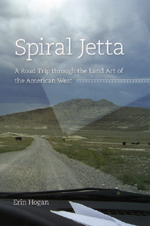Read more nonfiction, too
 Since yesterday, when the National Endowment for the Arts announced the results of its latest study of national reading habits, scores of articles have appeared to report on its findings that “for the first time in more than 25 years, American adults are reading more literature”—a great leap forward from the portrait of our habits painted by the NEA’s last study, in 2002, which found that reading was “in crisis.”
Since yesterday, when the National Endowment for the Arts announced the results of its latest study of national reading habits, scores of articles have appeared to report on its findings that “for the first time in more than 25 years, American adults are reading more literature”—a great leap forward from the portrait of our habits painted by the NEA’s last study, in 2002, which found that reading was “in crisis.”
Amid the flood of ink spilled over this apparently dramatic shift, David Ulin’s column in today’s Los Angeles Times stands out as particularly nuanced. “I’m not so sure reading really was in crisis—any more than it ever has been,” he writes, arguing that while he’s “glad that reading also seems to be on the upswing,” the NEA’s report might not paint the fullest picture possible of Americans’ literary lives.
Ulin points out, for example, that though the NEA for the first time included online reading habits in its survey, “nonfiction was left out of the loop.… That puts the works of David McCullough, Joseph Mitchell, Patricia Hampl and a lot of other authors into the ‘not literature’ category and out of the picture.”
Without wading into the debate over what counts and does not count as Literature, we might suggest that if you’re one of the many Americans who’s been reading more fiction lately, you might also enjoy sparkling literary nonfiction by the likes of Lawrence Weschler, Greg Bottoms, Adam Biro, Shirley Hazzard, and Erin Hogan. (In addition, of course, to the fiction of Norman Maclean and Lee Siegel.)
If you’re not sure where to start—or if you simply prefer to read online—allow us to point you toward excerpts of Hogan’s Spiral Jetta, Biro’s One Must Also Be Hungarian, and Siegel’s newest novel, Love and the Incredibly Old Man.